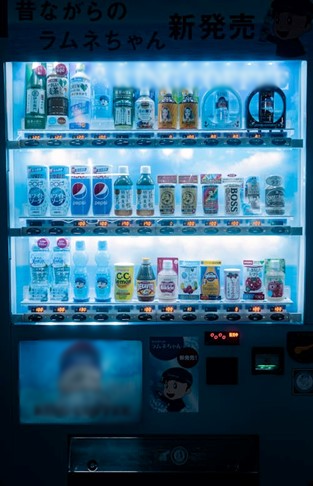What is Automated Retail Shopping ?
Automated retail shopping is the process of buying products or services from a store without needing to directly interact with a human employee. Instead, the transaction is facilitated by technology such as self-service kiosks, vending machines, mobile apps, or online platforms. Here's a closer look at what automated retail shopping offers:
Reduced staff Interference : With automated retail shopping, customers have the freedom to browse through available items, make selections, and complete transactions entirely on their own. This eliminates the need for face-to-face interactions with cashiers or salespeople, providing a more autonomous shopping experience.
Utilization of Technology : Automated retail relies on a range of technological tools to enable shopping transactions. These may include self-service kiosks equipped with touch screens and barcode scanners, vending machines stocked with various products, or user-friendly mobile apps and online platforms accessible via smartphones or computers.
Efficient Transactions : One of the key benefits of automated retail is its ability to streamline the purchasing process, resulting in quicker and more convenient transactions for customers. By utilizing automated systems, customers can navigate through product selections, make payments, and receive their purchases with minimal waiting time.

How Automated Retail Shopping works ?
Automated retail shopping, often operates through a combination of technology, machinery, and sometimes artificial intelligence to facilitate transactions without direct human intervention. These are the general processes involved in its working :
1. Product Selection : Customers interact with a user interface, which can be a touchscreen display, buttons, or even a mobile app in some cases. They browse through available products, which can range from snacks and beverages to electronics and even more niche items like beauty products or office supplies.
- Integration with Online Platforms : In some cases, automated retail systems are integrated with online platforms or mobile apps, allowing customers to browse inventory, make purchases, and even arrange for delivery or pickup remotely.
- Self-Checkout and Bagging : In some automated retail systems, instead of the typical vending-style setup where items are immediately dispensed after payment, customers can opt for self-checkout. They scan and bag items themselves before completing the transaction.
2. Payment Process : Once a customer selects a product they want to purchase, they proceed to the payment stage. Payment can be made using cash, credit/debit cards, mobile payments, depending on the machine's capabilities.
3. Inventory Management : Automated retail machines are generally equipped with sensors and inventory tracking systems to monitor product levels. When a product is purchased, the inventory system updates automatically to reflect the change in stock levels.
4. Product Delivery : After payment is completed, the machine dispenses the purchased product to the customer. This process is typically automated, with mechanical arms or conveyor belts delivering the item to a retrieval area where the customer can collect it.
5. Maintenance and Monitoring : Automated retail machines require regular maintenance to ensure smooth operation. This includes restocking products, performing routine checks on the machine's functionality, and addressing any technical issues that may arise. Some machines are equipped with remote monitoring systems that allow operators to track sales and monitor machine health in real-time, enabling proactive maintenance and troubleshooting.
6. Security Measures : To prevent theft and vandalism, automated retail machines are often equipped with security features such as cameras, alarms, and tamper-resistant design elements. Additionally, some machines are placed in locations with high foot traffic or under constant surveillance to deter potential criminal activity.
Types of Automated Retail shopping
Some of the important types of Automated retail shopping include,
1 . Traditional Vending Machines : Vending machines are self-service devices that dispense a variety of goods, typically snacks, beverages, or small items, in exchange for payment. Customers can select their desired product from the machine's interface, usually via buttons or touchscreen, and then insert payment, either in cash or through cashless methods like credit/debit cards or mobile payments. Once payment is processed, the vending machine releases the selected item, providing a quick and convenient way for customers to make purchases without human interaction. These machines are commonly found in locations with high foot traffic such as airports, railway stations, schools, and office buildings. They offer 24/7 accessibility and are often used for impulse purchases or when traditional retail options are not available.
2. Micro Markets : Micro markets are small, unmanned retail spaces that offer a wide selection of products similar to grocery stores but without the need for staff. Customers can browse products displayed on shelves and refrigerated units and then use self-checkout kiosks to scan and pay for their items.These markets are commonly found in workplaces, college campuses, hospitals, and other communal areas where traditional retail spaces may not be feasible. Micro markets are often equipped with security cameras and inventory tracking systems to prevent theft and ensure accurate stock levels.
3. Smart Vending Machines : Smart vending machines are similar to traditional vending machines but these machines may utilize artificial intelligence algorithms to analyze customer behaviour patterns and preferences, enabling targeted promotions and personalized recommendations which will in turn result in more sales.
4. Click-and-Collect Lockers : Click-and-collect lockers are automated pickup points where customers can retrieve online orders at their convenience. After placing an order online, customers select a nearby locker location for pickup and receive a unique code or QR scan to access their locker. Once at the locker, customers enter the code or scan the QR code to open the locker door and retrieve their pre-packaged items. Click-and-collect lockers are commonly used by retailers, grocery stores, and e-commerce companies to offer customers a convenient and contactless pickup option.
5. Automated Checkout Systems : Automated Self checkout systems allow customers to scan and pay for items themselves without the need for a cashier. Customers use self-checkout kiosks equipped with barcode scanners or RFID readers to scan the items they wish to purchase. After scanning all items, customers make payment using cash, credit/debit cards, or mobile payment methods that are available in the kiosk. These systems reduce wait times, and offer customers greater control over their shopping experience. Automated checkout systems are usually found in large supermarkets, fashions stores , etc
Checkout 2CQR’s Retail self service kiosk
6. Robotic Retail Assistants : Robotic retail assistants are AI-powered robots designed to assist customers in various retail environments. These robots can guide customers to products, provide information about products and offers, and even process transactions. Equipped with sensors and cameras, they can navigate through store and interact with customers in a friendly and engaging manner. Robotic retail assistants enhance the shopping experience by providing personalized recommendations, answering queries, and speeding up the checkout process.
Example : https://www.youtube.com/watch?v=iJ184evAu-I
7. Subscription Box Services : Subscription box services deliver curated boxes of products to customers on a recurring basis, typically monthly or quarterly. Customers subscribe to a service and provide preferences or interests, and the service selects and sends products tailored to their preferences. Subscription boxes can include a wide range of items, such as beauty products, snacks, books, or clothing. Automation is used throughout the process, from order fulfillment based on customer preference databases and packaging to delivery tracking and bill processing. Subscription box services offer convenience and novelty, allowing customers to discover new products and brands without the need for regular shopping trips.

Benefits of Automated Retail Shopping
1. Convenience : Automated retail allows customers to shop at their own pace without having to wait in long lines or adhere to store hours. This convenience is particularly appealing for busy individuals who may not have the time for traditional shopping experiences.
2. Reduced Labour Costs : Automated retail systems can decrease the need for human staff, especially for tasks like cashiering and restocking. This can lead to significant cost savings for retailers, which may be passed on to consumers in the form of lower prices.
3. Accuracy : Automated systems are less prone to errors compared to human-operated processes. For instance, self-checkout kiosks can help prevent mistakes in scanning and pricing items, leading to more accurate transactions.
4. 24/7 Accessibility : Some automated retail setups, such as vending machines and unmanned stores, can operate 24 hours a day, providing customers with access to products even outside regular store hours.
5. Personalization : Advanced automated retail systems like smart vending machines,etc can utilize data analytics and AI to offer personalized recommendations and promotions to customers based on their past purchases and preferences, making the shopping experience more tailor made.
6. Space Efficiency : Automated retail setups typically require less space than traditional brick-and-mortar stores, making them suitable for high-traffic areas where store rents are expensive or spaces are limited.
7. Hygiene and Safety : Particularly in the context of public health concerns such as the COVID pandemic, automated retail reduces the need for face-to-face interactions, thereby minimizing the risk of viral transmission through contactless transactions.
8. Innovation and Novelty : Automated retail is often associated with latest technology and innovation, attracting tech-savvy consumers who are interested in exploring new shopping experiences.
9. Scalability : Automated retail solutions can be easily replicated and scaled up, allowing retailers to expand their reach without significant investments in physical infrastructure and staff.
Possible Challenges :
Initial Investment : Implementing automated retail solutions requires a significant investment in technology infrastructure, hardware, and software. While the long-term benefits are substantial, some retailers may face challenges in securing the necessary capital to fund these investments.
Technical Complexity : Managing and maintaining complex technology systems can be challenging for retailers, particularly those with limited technical expertise. From troubleshooting software issues to optimizing hardware performance, ongoing technical support is essential to ensure the smooth operation of automated retail stores.
Security and Privacy : Safeguarding customer data and ensuring the security of payment transactions are important concerns in automated retail environments. With the growth of digital platforms and mobile apps, retailers must implement robust security measures to protect sensitive information from cyber threats and data breaches. Additionally, retailers must adhere to stringent privacy regulations to earn the trust and confidence of their customers.
Concluding thoughts : In the years to come, we can expect to see automated retail stores become more prevalent across industries, from grocery and convenience stores to fashion boutiques and beyond. As technology continues to advance and consumer expectations change, retailers will need to adopt automation to stay competitive in an increasingly digital and interconnected world.
Furthermore, the COVID pandemic has increased the adoption of automated retail solutions, as consumers seek safer and more contactless shopping experiences. Retailers are increasingly turning to automation ensuring the health and safety of both customers and employees.
Automated retail shopping is not just a trend but a transformative force that is reshaping the retail industry for the better. By utilizing the power of technology, retailers can deliver exceptional experiences that delight customers, drive sales, and fuel their businesses into the future.
